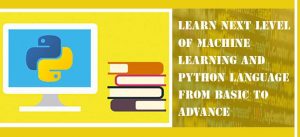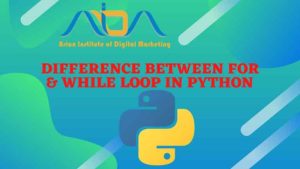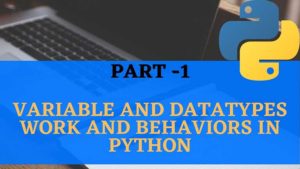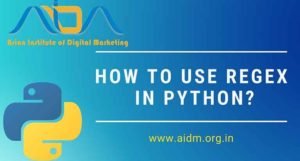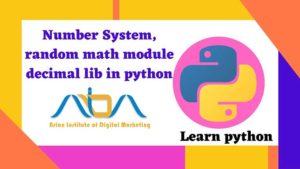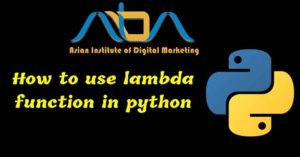This tutorial for python learners which is followed by our previous post. So without wasting time lets starts understanding the two-term of python programming language, Set & Dictionaries.
So let’s start from basics because the experts at AIDM, which the best python course in Delhi, believe that the understanding of basics terms plays a crucial role in the understanding of coding.
In mathematics, a rigorous meaning of a set can be dynamic and hard to get a handle on. For all intents and purposes, however, a set can be thought of basically like a very much characterized assortment of particular objects, ordinarily called elements or members.
Grouping objects into a set can be valuable in programming too, and Python gives an implicit set sort to do as such. Sets are recognized from other article types by the novel tasks that can be performed on them.
To become a master in python programming, join one of the leading python training institutes in Delhi.
What is Set?
A set in python language may have different characteristics
- Sets are unordered.
- The elements in the sets are unique.
- Duplicate elements are not allowed
- Set can be modified but the elements present in the set are of an immutable nature.
Operation on a Set
A significant number of the operations that can be utilized for Python’s other composite data types don’t make sense of sets. For instance, sets can’t be listed or cut. In any case, Python gives an entire host of operations on set items that for the most part mimic the operations that are characterized for mathematical sets.
In contrast to lists and tuples, which are both arrangement types, a Python dictionary is a planning object which is additionally alterable. Articles which map (interface) two snippets of information together are similarly as accommodating in programming as they are, in actuality.
For instance, word references map a word to its importance and grammatical feature. Phone number postings, regardless of whether on the web or in paper phone books, coordinate an individual’s name with their phone number.
So as to retrieve either a word’s definition or somebody’s phone number, an individual initially needs to initially look for and find the word or complete name, separately. In the two cases, one snippet of information is utilized to retrieve another.
Python word references work a similar way, putting away and recovering information as key-value pairs. The “key” is a unique identifier (like a name or mark) inside the dictionary which likewise should be hashable, and thusly an immutable kind, (for example, strings or numbers).
Accordingly, lists can’t be utilized as dictionary keys, however, tuples can, as long as they don’t straightforwardly or by implication contain a changeable item, something we exhibited in our article on tuples. The values put away in a dictionary can be any information type, alterable or immutable.
Since they are planning objects, Python word references are filed by keys, not by a scope of numbers as groupings may be. Keys resemble static names which can be utilized to handily get to evolving values.
For advance knowledge of python programming language, enrol yourself in the best Django training in Delhi.
Utilizing Dictionaries in Python Programs
Being alterable, Python word references are intended to have their components refreshed, added to, and even erased. This makes them incredible for programs which require putting away and afterwards recovering the most current values of a given procedure or item.
It likewise helps that dictionary queries in Python are quick, because of the way that they are actualized as hash tables, subsequently the necessity for the dictionary keys to be hashable.
Like lists, word references can likewise be “popped” (for example utilized as a LIFO queue) utilizing the pop item() technique, a component which makes it simple to repeat over a dictionary while moving its substance to another holder, similar to a rundown or set. Beginning with Python 3.7, the popped pairs are destined to be returned in LIFO request.
In spite of the fact that the standard use case for word references is to store and retrieve the value related with a key, keys, values, and both can be recorded utilizing dict.keys(), dict.values(), and dict.items(), separately.
Enhance you knowledge to become expert in python, joining the best Data Science Institute in Delhi by searching on google about the best python course near me.
These strategies make what are called see articles, and they are dynamic perspectives on the dictionary they are created from, which implies that any adjustment in the dictionary’s keys or things is promptly reflected in the dictionary see.
Dictionary perspectives can be iterated over and furthermore bolster a similar sort of enrollment tests that sets do.
Python word references make it simple to get to information utilizing advantageous names, rather than the list or cut documentation utilized with lists and tuples. They are a superb device for quick planning activities, and in this way ought to be surely known by all Python engineers, specialists and novices the same.
This is all about sets and directories, for all practical knowledge, you can visit our youtube channel. And to learn python under the guidance of industry experts, you can join AIDM, a top python training institute in Laxmi Nagar Delhi.
Releted Blog:

- Number system, random module, math library, decimal in the python programming language
- Variable and datatypes work and behaviours in python language
- Python setup and a basic understanding of python language
- How to use casting and string in python
- Use of Boolean Datatype and Python Operators
- Use case of the tuple in python difference between list and tuple


